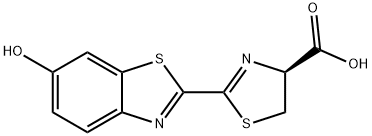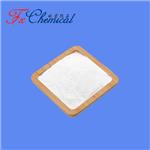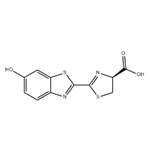D-Luciferin is a popular bioluminescent substrate of luciferase in the presence of ATP, used in luciferase-based bioluminescence imaging and cell-based high-throughput screening applications. In an immunocompetent mouse model of ovarian cancer, the use of D-luciferin substrate and firefly luciferase preserves tumour-host immune interactions since bioluminescent imaging is a more sensitive indication of tumour growth than weight gain.
off-white to light yellow powder
D-Luciferin has been used in the preparation of the reaction mixture for nitric oxide determination by minescence measurement. It has also been used in the preparation of D-luciferin stock solution for luciferin assays.
D-Luciferin has been used in determining luciferase activity by luciferase assay in mice and Arabidopsis thaliana seeds. It has also been used in measuring bioluminescence in neonatal rat ventricular cardiomyocytes.
ChEBI: A 1,3-thiazolemonocarboxylic acid consisting of 3,5-dihydrothiophene-4-carboxylic acid having a 6-hydroxybenzothiazol-2-yl group at the 2-position.
D-Luciferin is a small molecule present abundantly in bioluminescent organisms. This molecule is sensitive to oxygen and light.
D-Luciferin uptake within the cells is regulated by the adenosine triphosphate (ATP)-binding cassette (ABC) transporter inhibitors like ATP-binding cassette transporter G2 (ABCG2)/ breast cancer resistance protein (BCRP) inhibitor fumitremorgin C. This substrate is oxidized by firefly luciferase that results in emitting a photon, which has the capability of passing through living tissues.
D-Luciferin crystallises as pale yellow needles from H2O, or MeOH (83mg/7mL). It has UV max at 263 and 327nm (log 3.88 and 4.27) in 95% EtOH. The Na salt has a solubility of 4mg in 1 mL of 0.05M glycine. [White et al. J Am Chem Soc 83 2402 1961, 85 337 1963, UV and IR: Bitler & McElroy Arch Biochem 72 358 1957, Review: Cormier et al. Fortschr Chem Org Naturst 30 1 1973, Beilstein 27 III/IV 8934.]



